Plants produce a wealth of drugs and other useful natural products. These compounds are often structurally complex, limited by difficulties in accessing source species and beyond the reach of chemical synthesis. The discovery – by Professor Anne Osbourn – that genes for specialised metabolic pathways are organised like beads on a string in plant genomes has fuelled the findings of novel plant compounds and pathways. At the height of her career, she decided to take a year off to study poetry. Today, poetry and plant research support each other. Anne Osbourn is receiving the 2023 Novozymes Prize for her pioneering work that has opened new opportunities to access chemicals from plants, produce important drugs in higher amounts, and improving plants’ natural defence systems to benefit both people’s health and the sustainability of the planet.
Plants produce more than 1 million compounds, but the genes are only known for about 50 complete plant natural product pathways. Thus, the understanding of how compounds are synthesised is highly fragmented. Anne Osbourn has dedicated her research career to characterising plant biosynthetic genes, enzymes and pathways and harnessing these for medicinal, agronomic and industrial applications.
One pathway, on which Anne Osbourn’s lab is working, is for an immunostimulant, QS-21, which is a key component of vaccines for shingles, malaria and COVID-19. It is also used in vaccines being developed for ovarian cancer, Alzheimer’s disease, tuberculosis and HIV. QS-21 is currently extracted from the bark of the soapbark tree, which grows in Chile.
“Interest has been increasing in finding ways of reducing the environmental impact and improving the sustainability of sourcing this very important compound. We are working on elucidating the entire pathway for QS-21, and we have a rapid way of putting these genes to work in a heterologous plant expression system, which means that we can go from expression constructs to making chemicals in five days. This opens the possibility of producing QS-21 and other structurally related adjuvants optimised for immunostimulant activity and suitable for human applications – and this has attracted interest,” explains Anne Osbourn, Deputy Director of the John Innes Centre and Honorary Professor at the University of East Anglia, Norwich, United Kingdom.
Poetry or science?
Anne Osbourn was always fascinated with the natural world and in particular plants. She grew up in a village in Yorkshire in northern England. There were woods and a stream nearby and the moors, which Anne as a child loved exploring. When she was very young, she already started to learn the names of plants.
I loved plants but was squeamish about animals and certainly did not like dissecting them at high school in the biology class. I used to make my mother go for picnics in the winter to try and find flowers. The first plant to flower was the coltsfoot. My childhood memories are of gardens more than houses. When I was 3 years old, I could say Primula denticulata. And so I ended up going down the plant route.
Anne also grew up in a home full of books of classical literature. Her parents both studied and taught literature, so she also grew to love English and creative writing. However, in school she was forced to choose.
“The hardest decision I had to make at school was whether to specialise in the arts or in science. Because my parents’ house was full of books, it was like a library: double stacked literature and fiction. I suppose I always thought that this option would be there anyway. And so, my sister and I both went down the scientific route, and I chose botany.”
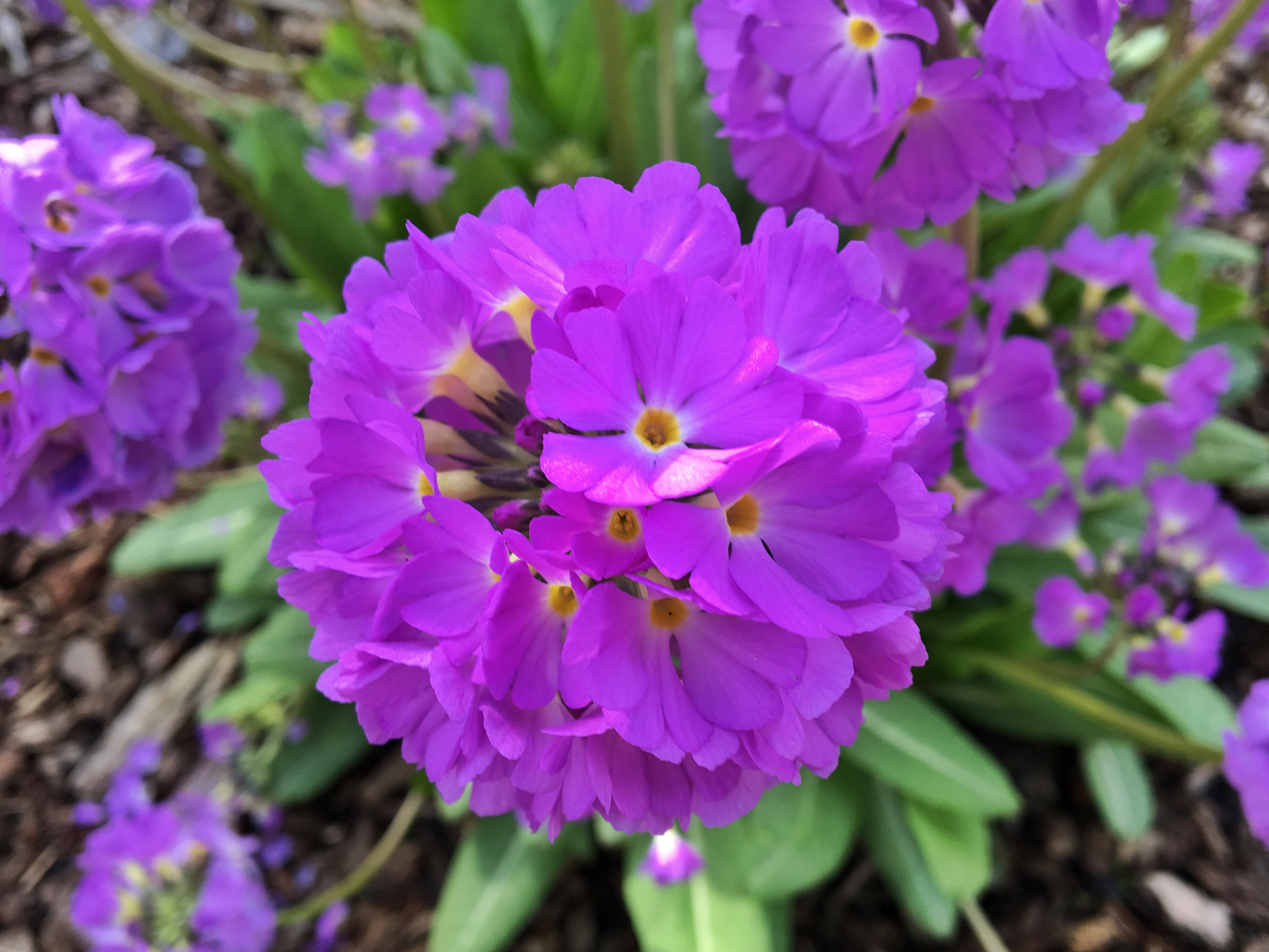
Photo: Primula denticulata (Getty Images)
Powerful in the animal world
After finishing her master’s degree at the University of Durham, Anne Osbourn went to the University of Birmingham for her PhD – in a genetics department, where she started studying the interactions between plants and the pathogens that might attack them, in her case a fungal pathogen called Septoria that causes a disease in barley and wheat known as glume blotch.
That led me to be interested in how microbes and plants interact. I had the opportunity to move to the Sainsbury Laboratory in Norwich when it first started in 1988, where I set up a programme in the laboratory of Mike Daniels working on bacterial pathogens. I then started working on fungal pathogens of plants.
The Sainsbury Laboratory conducts research on interactions between plants and microbes. At that time, people were beginning to apply molecular biology to understanding the mechanistic basis of how pathogens cause disease, and in her early work on bacterial plant pathogens, Anne was the first to develop a selective method for identifying the crucial pathogen genes expressed in a host.
“This way of selecting for host-expressed genes we developed in plants subsequently got taken up by animal people and proved to be very powerful in the animal world. One day, I remember hearing ‘in vivo expression technology’, and I just looked at my boss at the time. Mike Daniels, and we realised that we had actually invented IVET.”
A double whammy
The technology became a powerful and pervasive approach for microbiologists, who used it to identify bacterial genes during infection and the determinants of potentially deadly fungal pathogens such as Candida albicans. But through her investigations of the mechanistic basis of plant–microbe interactions, Anne Osbourn’s focus changed.
“Instead, I became fascinated with how plants defend themselves against the pathogens and the role of plant-derived natural products. I was interested in why plants make different kinds of chemicals. These chemicals are not just waste products; they are believed to have important functions in interactions between plants and their environment and plants and other organisms.
Anne Osbourn started understanding how plants naturally make chemicals, what they do and the mechanisms by which chemistry is diversified in the plant kingdom. The work led to a landmark contribution in 1991 in which she demonstrated that a root-infecting fungus could infect oats if it was able to detoxify avenacin – an antimicrobial compound produced by the plant.
“At the time, the community was mostly focused on the defence responses that were induced in response to pathogen attack. We showed that the preformed antimicrobial compounds that plants produce as part of their normal programme of growth and development can protect against disease and are very important in plant defence.”
An unexpected development from the work was the finding that the breakdown of such chemicals by fungal pathogens can give rise to a double whammy.
“Not only are the plants’ chemical defences broken down. The breakdown produces compounds that also block induced host defence responses.”
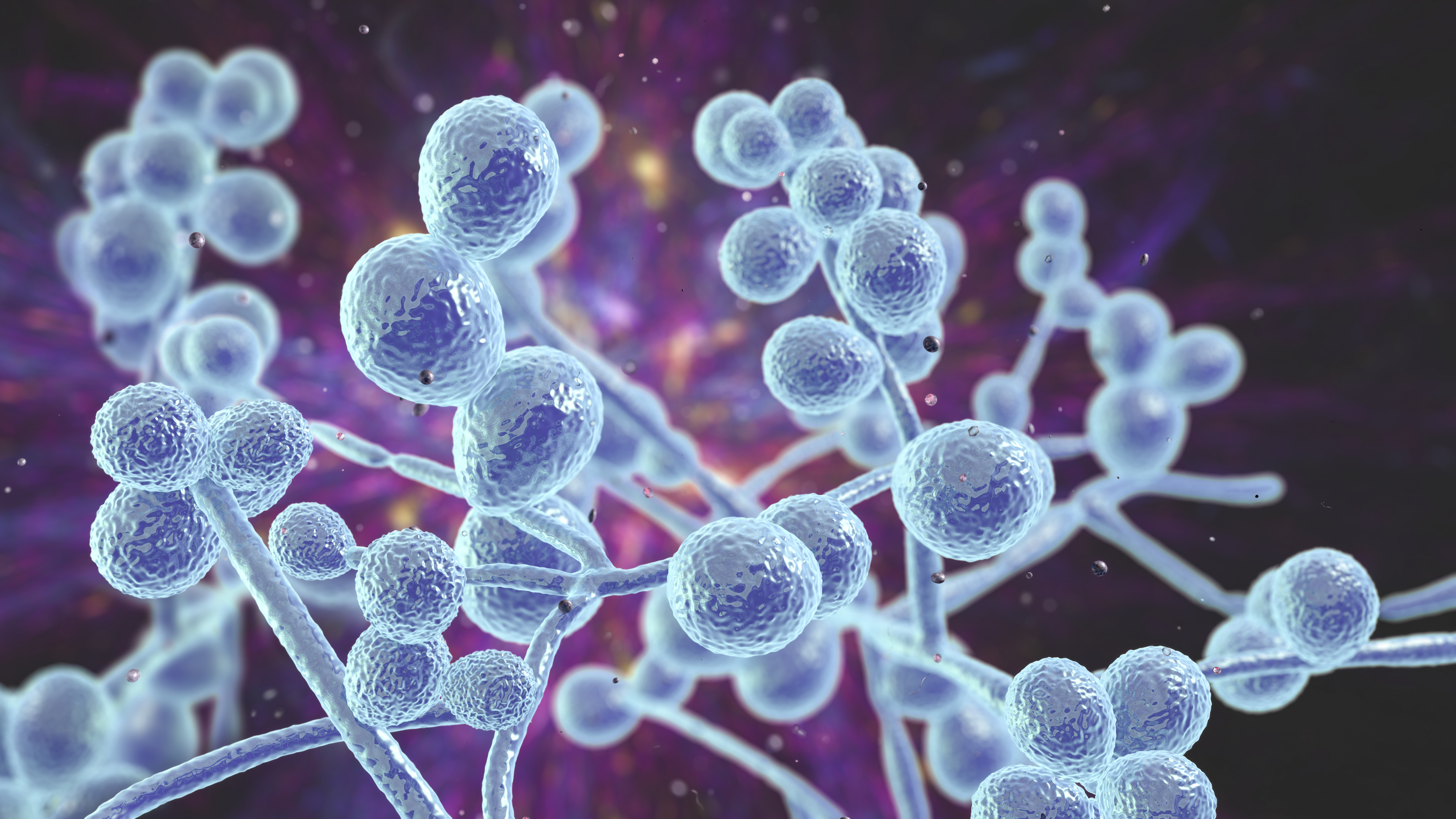
Photo: Candida albicans (Getty Images)
Anne and her oats
The findings got Anne Osbourn to launch a major programme, exploiting the fact that avenacin, the major antimicrobial compound in oat roots, is naturally fluorescent under ultraviolet light. By screening for mutants with reduced root fluorescence, she could isolate oat lines that did not have proper defence.
“So, we isolated more than 100 mutants of oats that did not make avenacin and showed that these mutants were susceptible to disease. So, that provided evidence from the plant side that these molecules were really important.”
It was thus Anne Osbourn’s pioneering work that helped push the international research community to invent the term phytoanticipin – distinguishing the preformed chemicals from pathogen-induced chemicals known as phytoalexins – very similar to the human immune system, which also comprises an innate and an acquired part. But few people believed that her findings were universal for the plant kingdom.
“So, I sometimes got called Anne who works on avenacin. She does oats, you know, that’s what she does. But the discovery has led to much broader findings, another discovery that we stumbled across unexpectedly.”
When the researchers started to look at how plants make defence-related molecules, the genes for these multi-step pathways, instead of being distributed around the genome, are sometimes organised in clusters, like beads on a string – right next to each other.
Your average plant genome has about 30,000 genes. If you are trying to find the 10 or 12 genes in that genome that are needed to make a specific chemical, you are clutching at straws trying to find these genes, which are scattered around the genome. But it has become clear that plants have a phenomenon called biosynthetic genes. And that was a big shock to the community.
A lot to lose potentially
The hard work of identifying mutants and genetic analysis helped to create a paradigm that has been crucial for specialised metabolic pathway characterisation and design ever since. The gene clusters were still considered somewhat controversial.
However, what happened next was probably more controversial.
I went into science, did a degree in botany, did a PhD in genetics, did a postdoc and became well established. But then in 2004, I just felt that somehow something was missing. I had been looking at job ads in Nature. And I saw this advertisement from an organisation called the National Endowment for Science, Technology, and the Arts.
Nesta was set up in 1998 with lottery money to promote innovation and invention in the United Kingdom. The money enables talented people to develop original ideas. One programme was called the Dreamtime Fellowship – inspired by the Aboriginal walkabout dreamtime. I just decided I had had enough of writing all these learned scientific articles. I wanted to do something different for a while. So, I applied for one of these grants to go to the School of Literature and Creative Writing at the University of Norwich, one of the leading places in the world for creative writing.”

SAW Trust
Anne Osbourn was awarded a 1-year fellowship, during which she wrote poetry about how she came to be who she was and why she went into plant science.
“Publishing poetry is very different from publishing science – there is peer review but often no feedback. So, this was quite radical. I just said that I am going to go and write for a year. I think the people around me were very surprised. Some people were really impressed and curious, and others thought it was a bit odd. And this was at a time when doing something like this was quite risky. Potentially, I had a lot to lose.”
During her Nesta Fellowship, Anne Osbourn also founded the Science Art and Writing (SAW) Trust – an international charity that promotes innovation in science engagement to support the development of a cross[1]disciplinary educational programme. Since it was founded, thousands of children in the United Kingdom, the United States and China have participated in SAW projects.
It is very rewarding to be playing a role in inspiring young scientists from elementary school. So, these children may go on to be newspaper reporters or politicians or artists or writers, but if they have any affinity with science, then that is good for everybody.
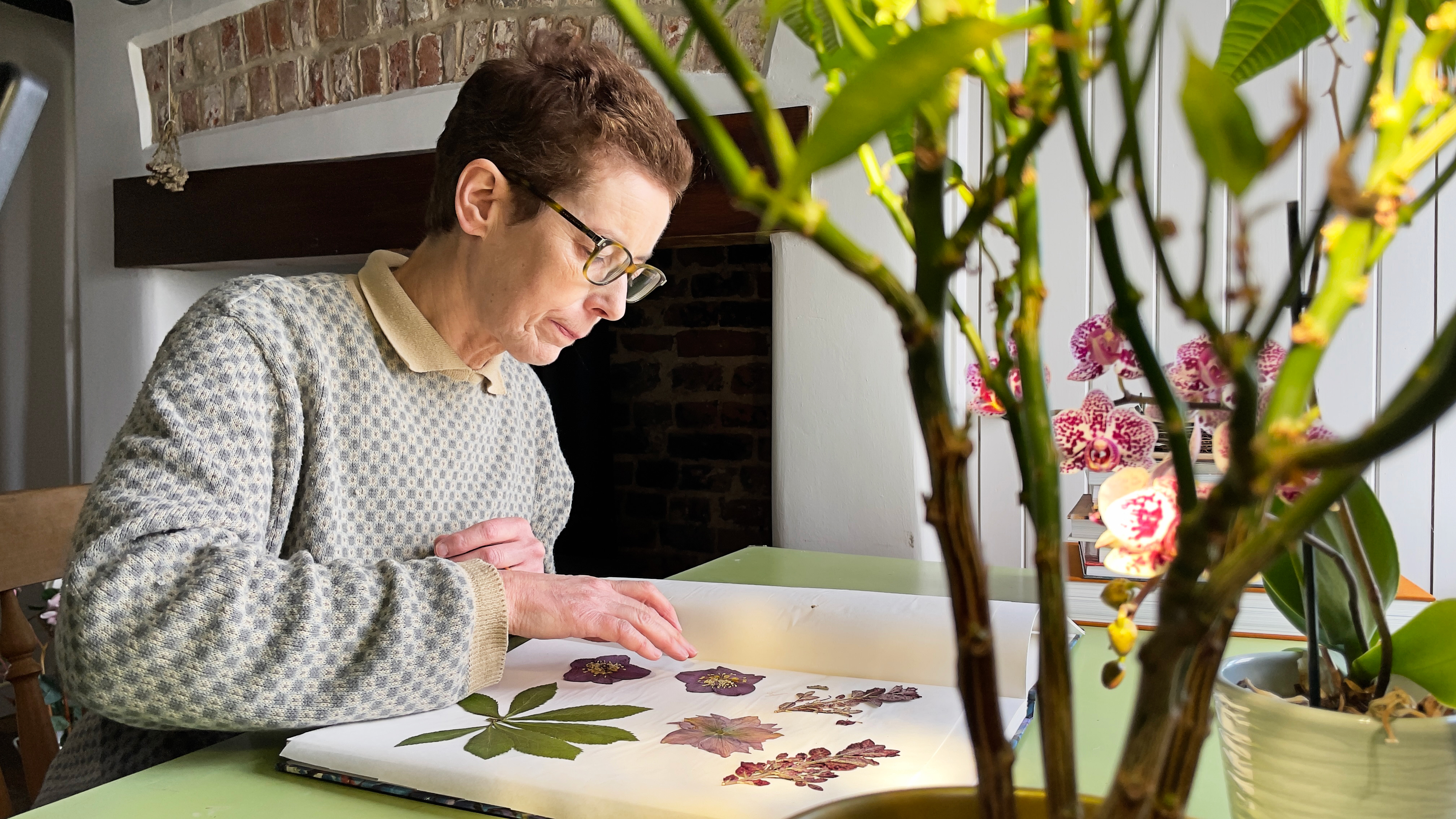
Photo of Anne Osbourn was taken by Mette Frid Darré
Began to support each other
At the time when Anne Osbourn joined the Dreamtime Fellowship programme, she had a successful research group and things were going well, and she wanted her group to continue running until she knew whether she would carry on doing research.
Initially, when I had my year writing poetry, I thought that is it, I am not going back to science. I am going to be a writer. But then I thought, well, I will go back to science for a while. Then I realised that somehow the two were feeding off each other.
Luckily, her group continued being successful while she was away. It was a surprisingly productive year.
Although I was on sabbatical for a year, I was still going in one day a week. I think that, partly because I was not there all the time, people wanted to do things so they could show them to me at the end of the week. And it kind of seemed to accelerate things.
Gradually, Anne Osbourn realised that the three different strands – research, outreach and poetry – were not competing with each other. They began to support each other.
“So, I could integrate doing school engagement work into a regular science grant proposal and it would be very well received. And I started publishing poetry in science magazines.”After finishing her Nesta Dreamtime Fellowship, Anne was awarded a highly prestigious Branco Weiss Society in Science Fellowship to continue developing her cross[1]disciplinary activities, which she did in parallel with returning to full-time science.
The rule – not the exception
Shortly after she came back after the Fellowship, Anne Osbourn moved to the John Innes Centre in Norwich – ranked first in the world for scientific impact in plant and animal research. There she got a group leader position, determined to prove that she was not just Anne with her oats but initiating a broader programme on plant natural products – how they are made, what they do and mechanisms underpinning metabolic diversification.
“I knew that, if the genes for natural product pathways are indeed organised in clusters, this would open up great opportunities for discovering new pathways and new beneficial natural plant products. But the plant world was still saying: ‘Well, yes, but you know, these are just odd exceptions.’”
Many believed that the odd gene clusters had arisen from gene transfers from the microbes that lived alongside the plants. But in a landmark 2008 Science article together with colleague Ben Field, she showed that gene clusters of the chemically and pharmacologically important triterpenoids have evolved multiple times.
This finding suggests that plant genomes have remarkable plasticity and that these gene clusters can assemble in real life and were not just inherited from bacteria.

Photo: John Innes Centre in Norwich
Causing abnormal patterns of development
Further research proved that these operon-like gene clusters had indeed assembled recently and independently in both oat and in the thale cress Arabidopsis thaliana. This has now snowballed, and over the past 5 years more than 35 clustered natural product pathways have been reported from plants.
“These include medicinal alkaloids from poppy, anti-nutritional compounds in tomato and cucumber and many, many other examples. So, this is an intriguing phenomenon. And we could debate for hours why these gene clusters exist. The crucial thing is that it means that we can use computer algorithms to scan plant genomes to look for candidate new gene clusters for pathways and chemistries.”
Anne Osbourn’s subsequent work led to the hypothesis that clustering of genes in plants makes sense since it minimises the risk of accumulating harmful metabolic intermediates. And she showed that the disruption of clustered pathways and consequent accumulation of intermediates in several instances adversely affects plant growth and could cause abnormal patterns of development.
“Did they come from microbes? Is that why they are clustered? The answer to that seems to be unequivocally no. They have arisen by gene duplication and acquiring new functions and presumably are a result of selection pressure. Otherwise, this would not happen.”
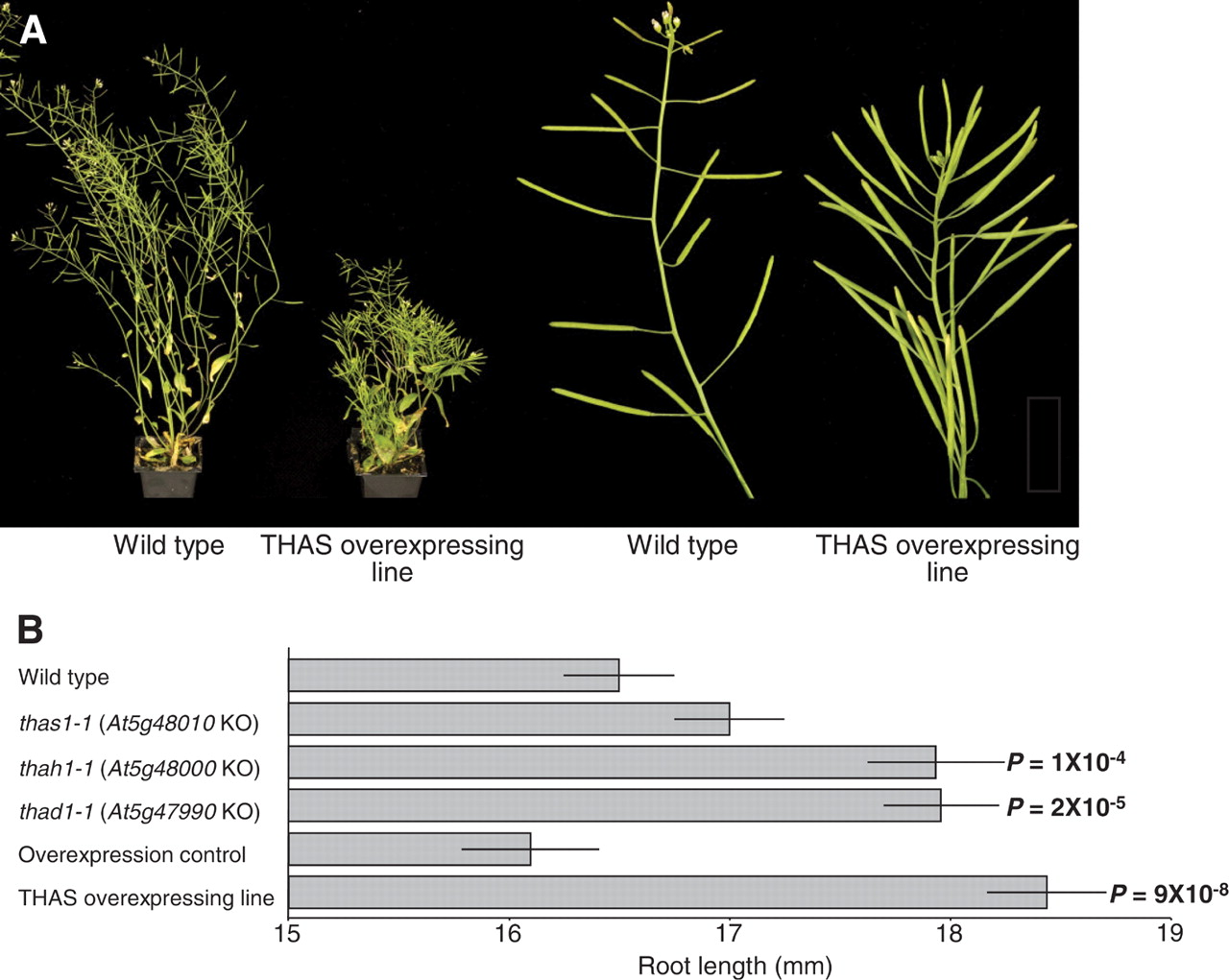
Photo: In 2008, Field and Osbourn found a gene cluster in the plant Arabidopsis thaliana that is necessary for the synthesis of the so-called triterpenes.
Gram-scale quantities
Plants are an excellent source of new useful compounds – such as drug leads. However, availability is limited by access to source species and low abundance. Microbes have therefore traditionally been used as hosts for producing plant-derived compounds, but they also have substantial limitations and optimisation is far from trivial, since fundamental knowledge is lacking about differences in cellular processes between plants and bacteria.
“So we, like many groups around the world, have used microbes to express genes for these natural plant compounds. However, a colleague of mine, George Lomonossoff, made a serendipitous discovery while working with a dwarf wild relative of tobacco, Nicotiana benthamiana.”
Almost by chance, George’s group found that if they combined a target gene, a green fluorescent protein, with a strong promoter sequence in front, and then a little bit from the RNA-2 gene from a plant-infecting virus, they could get massively elevated levels of green fluorescent protein in N. benthamiana.
“This is very quick. Five days later, you can see your green fluorescent protein being expressed. So, George was very excited about this. One day he came to my office and said: Well, why don’t you try doing it with plant natural product pathways? And so we did, and we found that it is incredibly quick and powerful. We found that we can assemble pathways of over 20 steps. And if you want to, you can scale up to infiltrate whole plants. And that has enabled us to purify up to gram scale amounts of pure compound, which is incredibly powerful.”
You don’t need to know
The new powerful plant platform serves as an important proof of concept with obvious biotechnological value. However, although about 1 million natural plant products likely exist, genes are known for only about 50 natural plant product pathways.
Plant genomes have more than 30,000 genes, so finding the 10 or 20 genes in a pathway that do what you are interested in is quite a challenge. But that is becoming possible.
Coupled with advanced genome mining algorithms, the new expression-based synthetic biology platform has opened the way for systematic analysis of the metabolic dark matter harboured within plant genomes.
“We can not only understand and recapitulate the pathways for known plant chemicals but can mine right across the plant kingdom and build a toolbox of genes and enzymes that enable us to make new chemicals that had not previously been reported. Because we can mix and match from the wealth of plant genome sequences out there.“
The idea of using algorithms like the ones that have been used in microbes to predict new pathway gene clusters is becoming very attractive.
“You do not even need to know what molecule you are looking for. You can just scan the genome for genes predicted to encode different classes of proteins that together look like they might be a biosynthetic pathway.“
The soapbark tree
The most exciting recent development using the new platform is saponin compounds from a wild South American soap bark tree (Quillaja saponaria). The tree makes more than 100 structurally related saponins (known as QS saponins), and one of the most abundant is called QS-21.
"This molecule is an immunostimulant and is used in human vaccines against shingles and malaria to enhance the immune response. The QS saponins are sourced directly from the tree, and interest is growing in findings ways of reducing the environmental impact and improving the sustainability of sourcing these important." resources.
Anne Osbourn’s lab has taken a major step forward in addressing this problem by using a combination of genome mining and bioengineering techniques to produce saponin-based vaccine adjuvants in the laboratory without harvesting material directly from trees.
“We first sequenced the genome of Quillaja saponaria. Then we used powerful computational gene-mining tools to predict which among the approximately 30,000 genes were responsible for biosynthesising saponin. This led to the identification of a biosynthetic pathway of 16 genes that act as an instruction manual for future adjuvant bioengineering.”
Identification of a further three enzymes resulted in a complete biosynthetic pathway to the saponin QS-7, a saponin that is included in a vaccine adjuvant with proven clinical efficacy but is notoriously difficult to purify from soapbark tree.The pathway to these molecules was reconstructed in the tobacco expression platform. The team has partnered with Plant Bioscience Limited, which is leading the commercialisation of the research. They have already used the instruction manual in an attempt to produce other valuable saponins, including QS-21, a potent adjuvant and key component in human vaccines.
“The COVID-19 pandemic demonstrated the huge demand for life-saving vaccines. By assembling the genome sequence of Quillaja saponaria, we now have the instruction manual that has enabled us to decode how the tree makes these potent medicinal molecules. Since the availability of these is limited by difficulties in accessing sourcespecies, low yield, purification problems and environmental concerns, the scale of the economic opportunity for improving the supply of high-value products from plants is therefore enormous.”
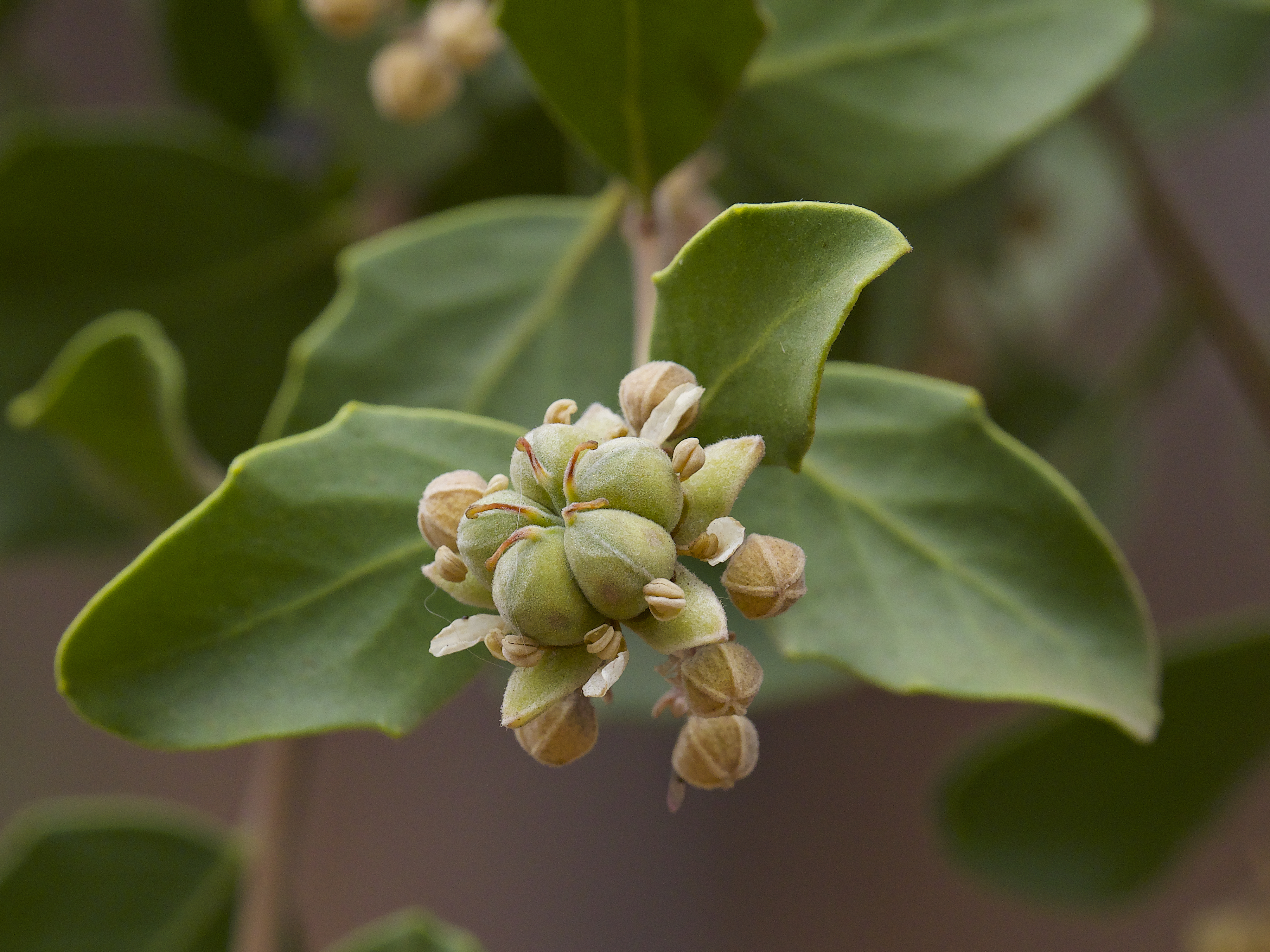
Photo: South American soap bark tree (Quillaja saponaria) (Foto: Getty Images)
Poetry revisited
But what about poetry? Was that just a short[1]lived adventure? For Anne Osbourn, poetry and science communication are much more than and not so different from science.
“The process of science – unlike what people normally think – is like the arts, a creative process. It involves looking at things, identifying a question that you want to address and then devising ways of investigating and discovering. Whether it is science or the arts, it is a creative process and scientists are creative.”
The big deal for Anne Osbourn has been that her scientist colleagues have kept asking: What is your book going to be about?
"That was stressful. Until I realised that whatever happens, becoming a poet would be an amazing experience. The whole point about the Dreamtime Fellowships was to give you the opportunity to have a completely different experience and then bring the positive benefits of that back to your normal job."
And then finally, in 2018, her first poetry collection, Mock Orange, won the Sentinel Poetry Book Competition and was later published by SPM Publications. This collection connects her work to poetry and art. Soon her second book, Rockall, will also be published.
“Science and the arts both involve a combination of creativity and technical competence in their quests to find the best possible truths. Scientists write about facts, and we reference everything. It is cold and clinical. Although I do not think poetry changes my scientific perspective, it has affected my scientific writing.“
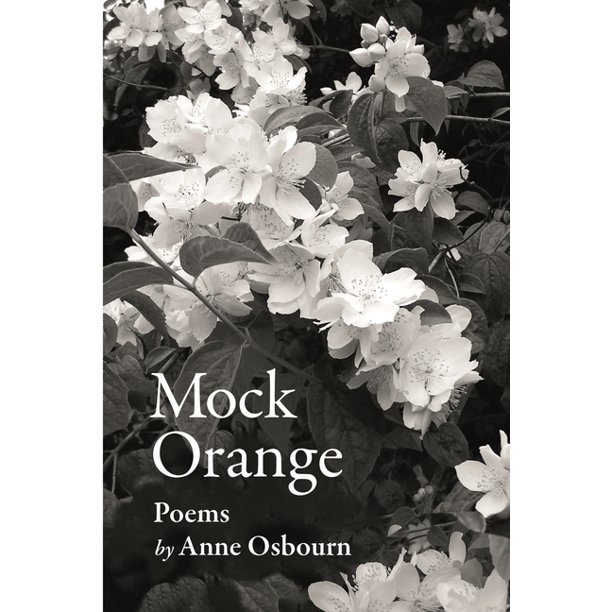
Photo: Anne Osbourn poetry collection from 2020 "Mock Orange" (SPM Publications)
Can help to tackle global warming
And there will undoubtedly be plenty to write about in the coming years on how plant research and biotechnology can benefit human health. The current understanding of plant metabolic diversity is scant and highly fragmented. Up to half the pharmaceuticals currently in use are either natural products or inspired by natural products.
“This vast new resource, in combination with advances in computational and synthetic biology, will make it feasible to map out the dark matter of plant genomes that determines metabolic diversity, with the aim of harnessing and expanding on the full chemical engineering capability of the plant kingdom.“
But the research of Anne Osbourn and the plant research community can potentially also greatly benefit the sustainability of the planet and alleviate the current food supply crisis. Anne Osbourn’s group has recently characterised four triterpene biosynthetic gene clusters with the capacity of producing dozens of previously unknown specialised root metabolites that sculpt the composition of the root microbial community, presumably to benefit the plant.
"This work opens the intriguing possibility to use genome-level functional prediction algorithms to modulate root microbiota composition. The potential impact of this discovery is massive and may lead to substantial acceleration of plant biotechnology and breeding efforts in the context of soil health and could thus ease food shortages and help to tackle global warming."
